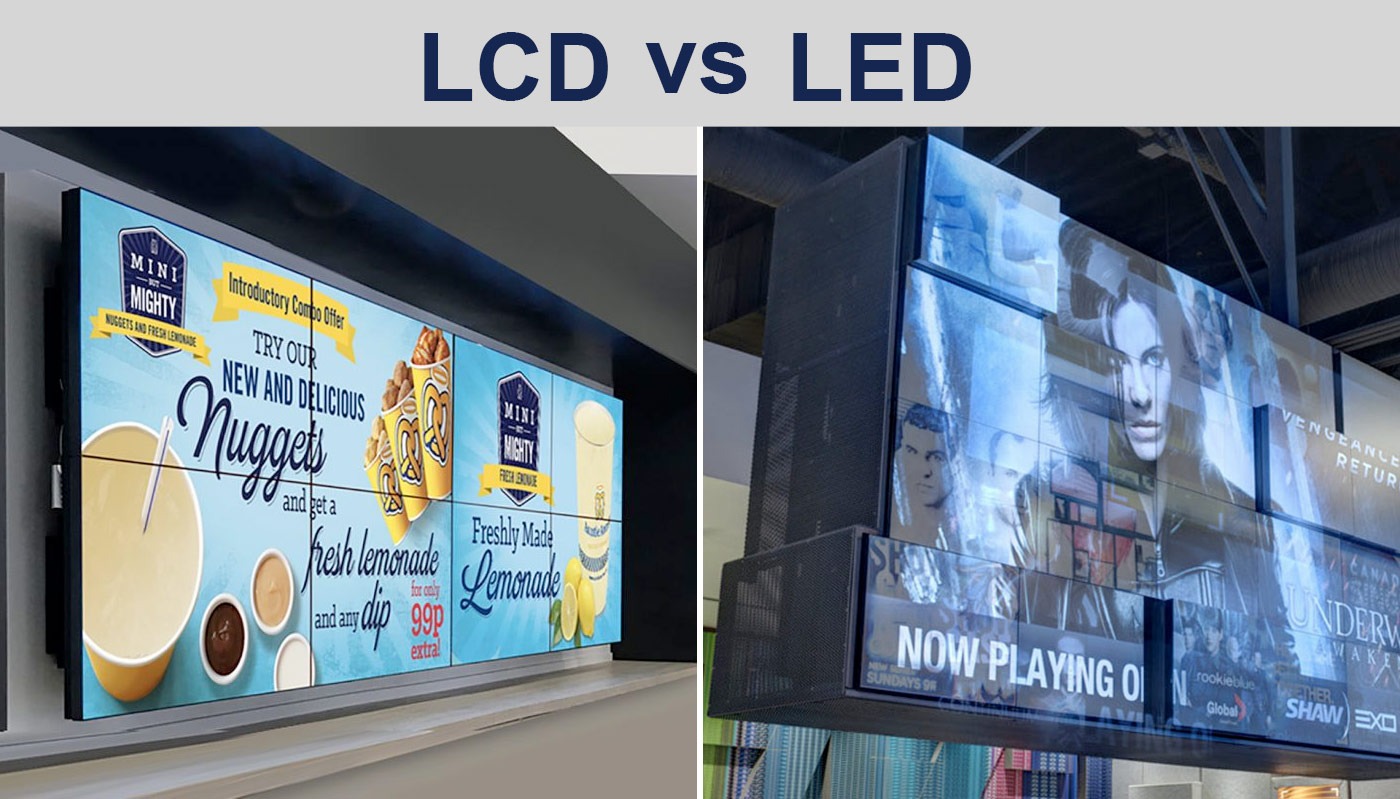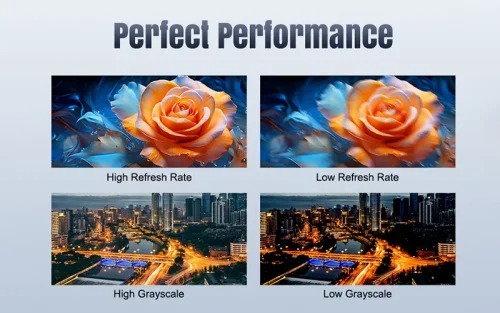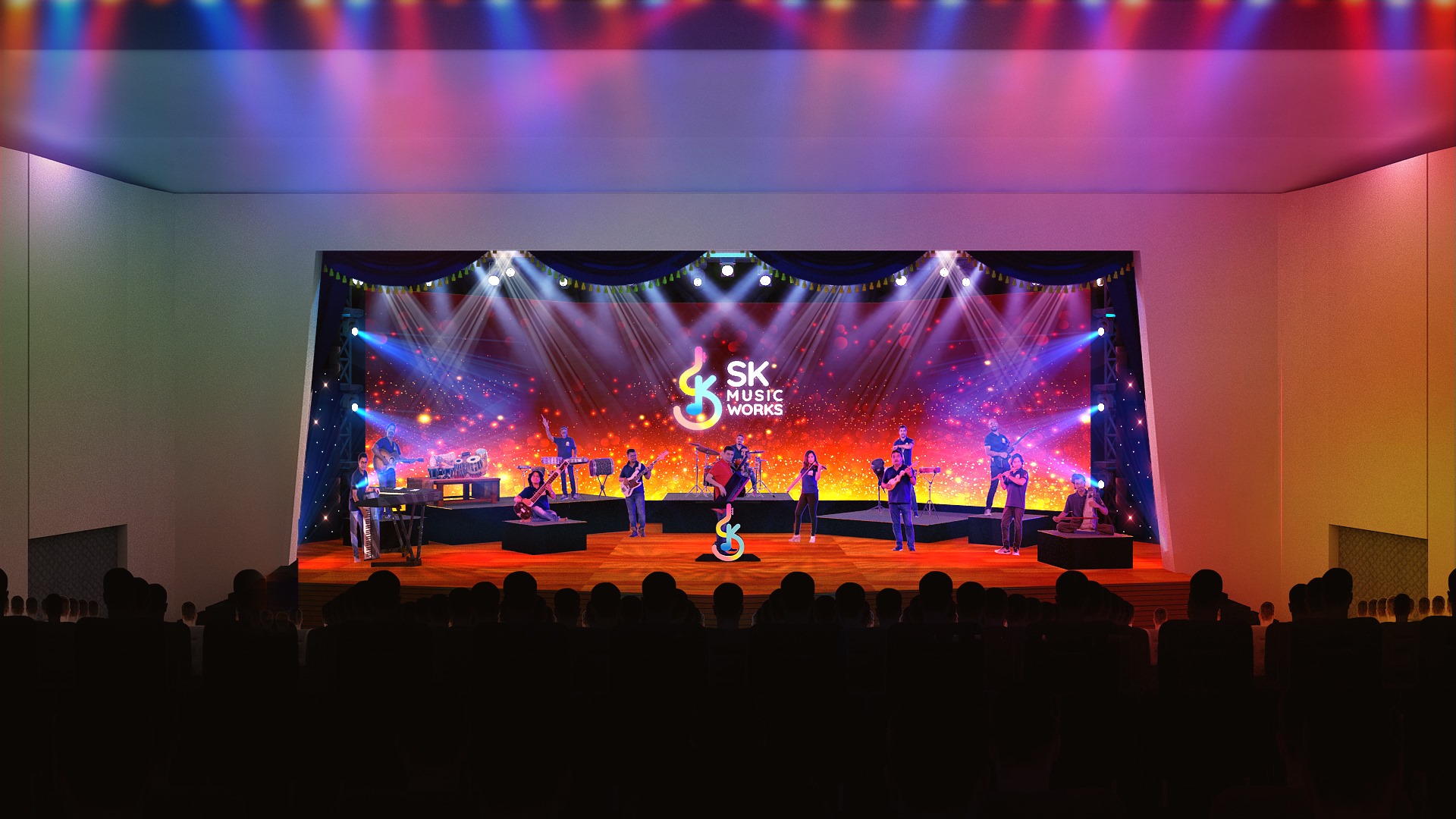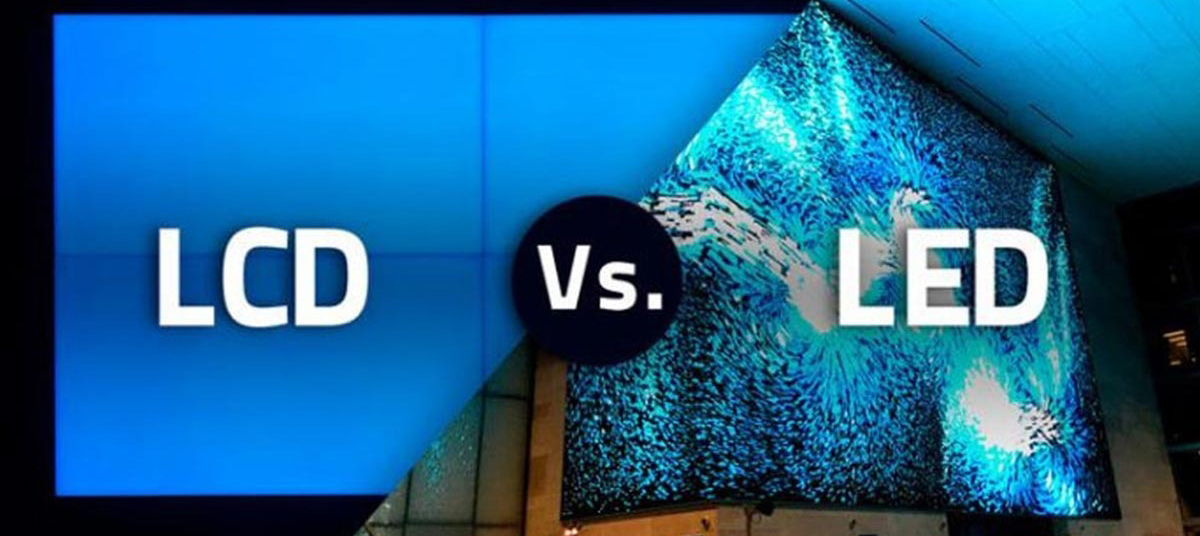1. What is LED, LCD?
LED stands for Light-Emitting Diode, a semiconductor device made from compounds containing elements like Gallium (Ga), Arsenic (As), Phosphorus (P), and Nitrogen (N). When electrons recombine with holes, they emit visible light, making LEDs highly efficient at converting electrical energy into light energy. LEDs have been widely used in displays and lighting.
LCD, or Liquid Crystal Display, is a broad term for digital display technology. Liquid crystals themselves do not emit light and require a backlight to illuminate them, much like an advertising lightbox.
Simply put, LCD and LED screens use two different display technologies. LCD screens are composed of liquid crystals, while LED screens are composed of light-emitting diodes.
2. Differences Between LED and LCD Display

Difference 1: Operating Method
LEDs are semiconductor light-emitting diodes. LED beads are miniaturized to the micron level, with each tiny LED bead acting as a pixel. The screen panel is directly composed of these micron-level LED beads. On the other hand, an LCD screen is essentially a liquid crystal display. Its main operating principle involves stimulating liquid crystal molecules with electric current to produce dots, lines, and surfaces, in conjunction with the backlight, to form an image.

Difference 2: Brightness
The response speed of a single LED display element is 1,000 times faster than that of an LCD. This gives LED displays a significant advantage in brightness, making them clearly visible even in bright light. However, higher brightness is not always an advantage; while higher brightness is better for distant viewing, it can be very glaring for close-up viewing. LCD screens emit light by refracting light, making the brightness softer and less straining on the eyes, but difficult to view in bright light. Therefore, for distant displays, LED screens are more suitable, while LCD screens are better for close-up viewing.
Difference 3: Color Display
In terms of color quality, LCD screens have better color performance and richer, more vivid picture quality, especially in grayscale rendering.

Difference 4: Power Consumption
The power consumption ratio of LED to LCD is approximately 1:10. This is because LCDs turn the entire backlight layer on or off; in contrast, LEDs can light up only specific pixels on the screen, making them more energy-efficient.
Difference 5: Contrast
Thanks to the self-illuminating nature of LEDs, they offer better contrast compared to LCDs. The presence of a backlight in LCDs makes it difficult to achieve true black.
Difference 6: Refresh rates
The refresh rate of LED screen is higher because it responds faster and plays video more smoothly, while LCD screen may drag due to slow response.

Difference 7: Viewing angles
LED screen has a wider viewing angle, because the light source is more uniform, no matter from which angle, the image quality is very good, LCD screen in a large angle, the image quality will deteriorate.
Difference 8: Lifespan
LED screen life is longer, because its light-emitting diodes are durable and not easy to age, while the LCD screen backlight system and liquid crystal material will gradually degrade over time.
3. Which is Better, LED or LCD?

LCDs use inorganic materials, which age slowly and have a long lifespan. LEDs, on the other hand, use organic materials, so their lifespan is shorter than that of LCD screens.
Therefore, LCD screens, composed of liquid crystals, have a longer lifespan but consume more power due to the all-on/all-off backlight. LED screens, composed of light-emitting diodes, have a shorter lifespan, but each pixel is a light source, reducing power consumption during use.
If you want to deeply leran LED industry knowledge, contact us now to get more
Post time: Aug-14-2024


